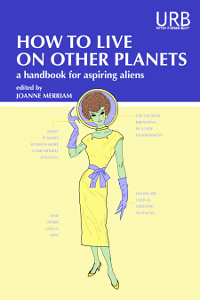 Series: Wildwitch, #1
Series: Wildwitch, #1
First Published: 7th January, 2016
Genre: Middle Grade Fantasy
Available: Amazon.com | Amazon UK
Clara is attacked by a large black cat on the way to school. When she gets sick from the wounds, her mother takes her to visit Aunt Isa for the first time. Isa is a wildwitch, and it looks like Clara might be too. The cat is only the start though. There’s something else going on, and it’s soon apparent that Clara needs training in order to defend herself.
The book looked as though it was inspired by traditional European witches. This is of particular interest to me, given my family connections. I wasn’t disappointed. The wildwitches are clearly based on that, down to having familiars (wildfriends), the nature focus of the magic, and a matriarchal system.
Much of the story is about Clara adjusting to what’s going on. She has to settle into staying with Aunt Isa, learn to get along with fellow apprentice Kahla, and figure out how to be a wildwitch. At the same time, all this means missing her mother and school friends. I liked that other concerns don’t magically disappear for the witches. Clara’s school has to be told she’s sick, to cover for her absence. Isa creates art to make money. The rest of the world doesn’t just fade away because there’s magic in it.
It also touches on systematic issues. The wildwitches aren’t right in every way. Their laws and traditions are subject to change, such as no longer making the ruling council blind themselves, and allowing some men in. Being close to nature doesn’t make an organisation infallible.
The way Clara’s training is handled is realistic. Clara has the raw ability and power, but she doesn’t have precision or control. A few weeks of training doesn’t suddenly make her a master. She’s a sledgehammer compared to Kahla. Wildwitches have to train for a long time. Clara doesn’t get around this because she’s the protagonist.
There were a few things that caught my attention in less positive ways. Kahla is non-white, and her skin is described as cinnamon. I’ll give the book its due that it doesn’t linger on that or keep repeating it, but food descriptions for skin are exotifying. I’m also a little undecided on the statement that blind people tend to be drawn to the council. It’s somewhat implied that it’s because they gain sight through their animals. I can see it might be true for some individuals (especially someone who wasn’t blind from birth), and it’s not stated that blind people are more magical or all drawn this way. But there’s still that implication that not having sight is something that needs patching up. I’d feel more comfortable if there had been blind people in other roles as well, who’d made other choices.
I enjoyed the story. There was a good balance of the more domestic scenes, where Clara is learning and figuring out where she stands, and the action scenes leading to the finale. I look forward to seeing how Clara’s abilities develop, and finding out more about the world of wildwitches.
[A copy of this book was received from the publisher for review purposes]
 First Published: 8th February, 2016
First Published: 8th February, 2016 First Published: 9th February, 2016
First Published: 9th February, 2016 Series: The Oddfits Series, #1
Series: The Oddfits Series, #1 First Published: 16th February, 2015
First Published: 16th February, 2015